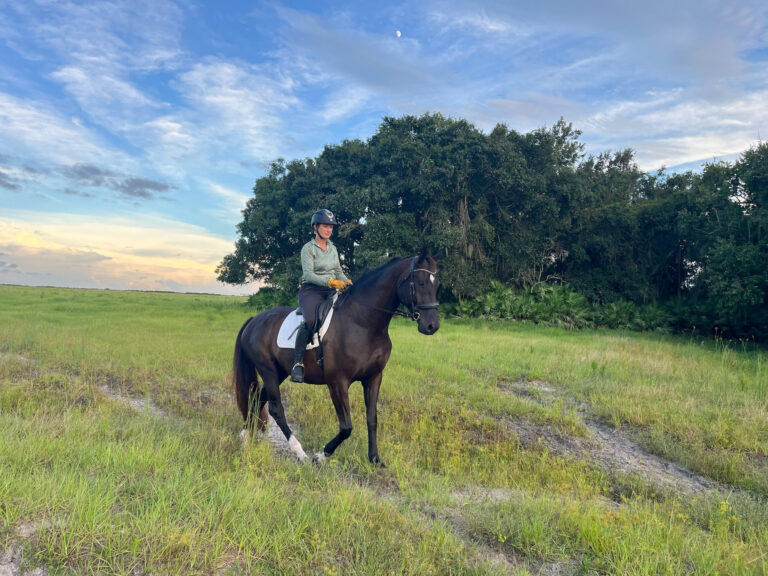It’s a cold wintry day, and I’ll bet your horse would just love some cooked food. No, not pizza or tuna surprise, but a flaxseed mash: stick-to-the-ribs comfort food that dispels cabin fever, and is…

- a great source of fiber (good for his digestion)
- loaded with oil (good for his coat, so you’ll have less brushing to do)
- great tasting and smelling (so it whets his appetite)
- not a “hot” feed (so it won’t make even a fresh horse go bonkers.
In addition flaxseed is relatively inexpensive (far cheaper, for example, than corn oil), goes a long way, and is easy to come by in 25-pound ($11 or so) or 50-pound ($21) sacks at feed or pet stores that sell wild bird seed.
There’s just one catch: The mash must cook all day for the tiny, hard seeds to soften, give up their oils and become digestible. That doesn’t mean you have to stand over a hot stove stirring, though. Just dump the ingredients into your slow cooker, set it on a clean, safely-out-of-the-way/off-the-floor flat surface (maybe in the tack room), plug it in and leave–if you can. The mash is so fragrant, you may want to spend the day puttering nearby.
How Much to Feed
- Give your horse cooked flaxseed at the rate of 1 cup per day, at no more than 25 percent of his total daily grain ration.
- Combine equal amounts of raw flaxseed, barley, and oats (deducted from your horse’s regular ration). If you choose to eliminate the oats, double the barley.
- The ingredients will double with cooking, so 1/2 cup of each will yield 1 cup of cooked flaxseed and a total of 3 cups of mash.
How to Cook It
- In the morning, place the flaxseed, barley, and oats in a slow cooker. To avoid boilovers, make sure the pot is no more than half full. (A medium slow cooker is usually good for two horses; a large one comfortably holds enough for five or six.)
- Level the dry ingredients and add boiling water to twice their depth. Stir well and set the slow cooker on “high”; when the mash boils (in about two hours for the large pot), turn it to “low” and let it simmer for the rest of the day. (If you’re short of time, make sure you cook the mash for at least four hours–or soak the seeds overnight to pre-soften them.)
- The mash is ready when it doubles in bulk (mine almost lifts the lid off the slow cooker); gets bubbly and gelatinous; and you can “pop” a couple of seed out of their skins by squeezing them between your fingers. (Be careful! The mash is very hot and exceptionally sticky; it can burn you badly. Scoop out a tiny dollop and let it cool before you test.)
- Turn off the slow cooker and cool the mash a bit, then scoop it into your horse’s regular grain ration with a handful of bran and a hearty “Bon appetit!”
Throw away leftover or unused mash. It would quickly ferment–and give your horse a world-class tummyache–if you saved it to feed the next day.
After a year, throw away the slow cooker, too. A new one won’t cost much, and a worn-out or malfunctioning electrical appliance in the barn is a deadly hazard.
Lori Green has worked as a barn manager and caregiver for a number of international riders.
This article first appeared in the January 2002 issue of Practical Horseman magazine.








